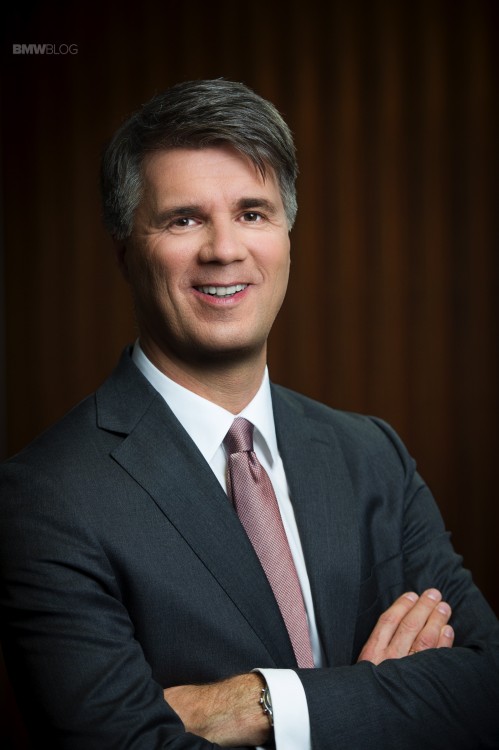In light of the Wagnerian opera playing out on VW’s board, it doesn’t hurt to look at the state of BMW. The CEO reins have been passed from Norbert Reithofer to Harald Krueger, who at the age of 50 may serve as CEO for the next ten years (given the board of directors’ blessing).
But the next ten years will be anything but easy; they may be the most critical ten years in BMW’s history and could spell the difference between a thriving corporation and one that is mortally wounded. As Nico DeMattia has pointed out in his article, BMW’s job is getting harder.
It doesn’t hurt to peek at where we the industry is at currently. Worldwide sales of new cars was roughly 80 million in 2014. Three companies, Toyota, VW, and GM contributed 30 million of those sales (37.5%). BMW grabbed 2.6% of worldwide sales, by selling 2.12 million cars. Electrification – in the light of increasingly stringent emissions regulations – is happening slowly, hampered as much by immature energy storage solutions as anything else.
BMW, under Norbert Reithofer’s direction set out to gain a firm footing and a guarantee of independence through the implementation of Strategy Number ONE, the goals of which were ‘to be profitable and to enhance long-term value in times of change’. They have done met those goals to this point by creating vehicles that sell at a sufficient premium to enable their small volume manufacture. After all, it almost seems that Toyota builds as many Corollas in a year as BMW builds all models. BMW cannot compete in the mass market segments – and now is not the time to ramp up production to compete in the entry/low priced vehicle segments.
And the current economic conditions must be taken into account. At the moment the economic crystal ball is cloudy. We are still hungover from the Great Recession and you hear of bubbles and rumors of bubbles, the Asian bubble, Grexit (Greek exit from the Eurozone), the student-loan bubble, whatever – and all of these can significantly impact the demand for automobiles – and that impact will be felt most keenly at the entry and locost segments.
Further complicating things is the knowledge that in 10 years (by 2025) some not insignificant percentage of car sales will include autonomous cars. Autonomous cars will be disruptive of sustained car sale volumes – especially in urban areas where car ownership has always involved huge hassles (in other words car sharing will become commonplace). Some predictions are that car sales could shrink by over 80% (though that is a very far fetched SWAG in my estimation).
Regardless what the decrease in sales volumes will be, autonomous cars will impact entry and locost sales initially. That is the segment where car sharing can take hold, mega-cities, India, and other emerging markets with lower per capita discretionary capital, and without a driving culture that has taken root in the middle classes.
BMW’s niche, driver’s cars, may protect sales in the transition to autonomous cars (after all if you want a driver’s car before they are all gone . . .). Long term, however, it is a losing proposition. Eventually – possibly beyond the ten year term of Harald Krueger, autonomous cars will become ubiquitous. In that event luxury performance cars will not include driver centric features. Rather passenger comfort and amenities will come to the forefront, features that Lexus and Mercedes tout currently (over and above any sporting prowess).
SO what can BMW do? BMW’s core strength are its production processes – BMW has shown that it can do amazing things with its plants. How they beat the much larger companies to the punch with volume production of CFRP vehicles beggars belief. But they did and it is a testament to their engineering capabilities. Just what is percolating at the FIZ we won’t know (yet) but you better believe that they are in the midst of gearing up for a brave new world.
We are seeing some of this with the new 7 series. Added self-driving capabilities (self-parking), air-bag suspension (a feature available on Rolls-Royces and quite compelling for ride comfort/compliance/composure), and additional connected drive features are there ready to trickle down through the marques model ranges.
One thing that stands out from my trip to the FIZ a few years ago was the radio frequency (RF) torture chamber. I was led into a large space, as big as a concert hall, lined with what appeared to be anechoic tiles. My immediate thought was sound testing. But a look at the copper Faraday shield surrounding one of the exit doors dispelled that notion. Here was a space where they could literally zap the car to determine how it copes with RF interference. And handling RF noise will be critical in an autonomous driving world.
BMW is in a pretty decent position to undertake the future, they have stable ownership, they have a market capitalization that makes takeover difficult, and one suspects they have a hefty cash reserve. But, as in any Wagnerian opera, fog in the forest is never a good omen and that forest fog (Waldnebel) is descending over the automotive industry. I suspect that the BMW we know and love will be completely transformed when Harald Krueger turns over the reins to a new CEO.







































































